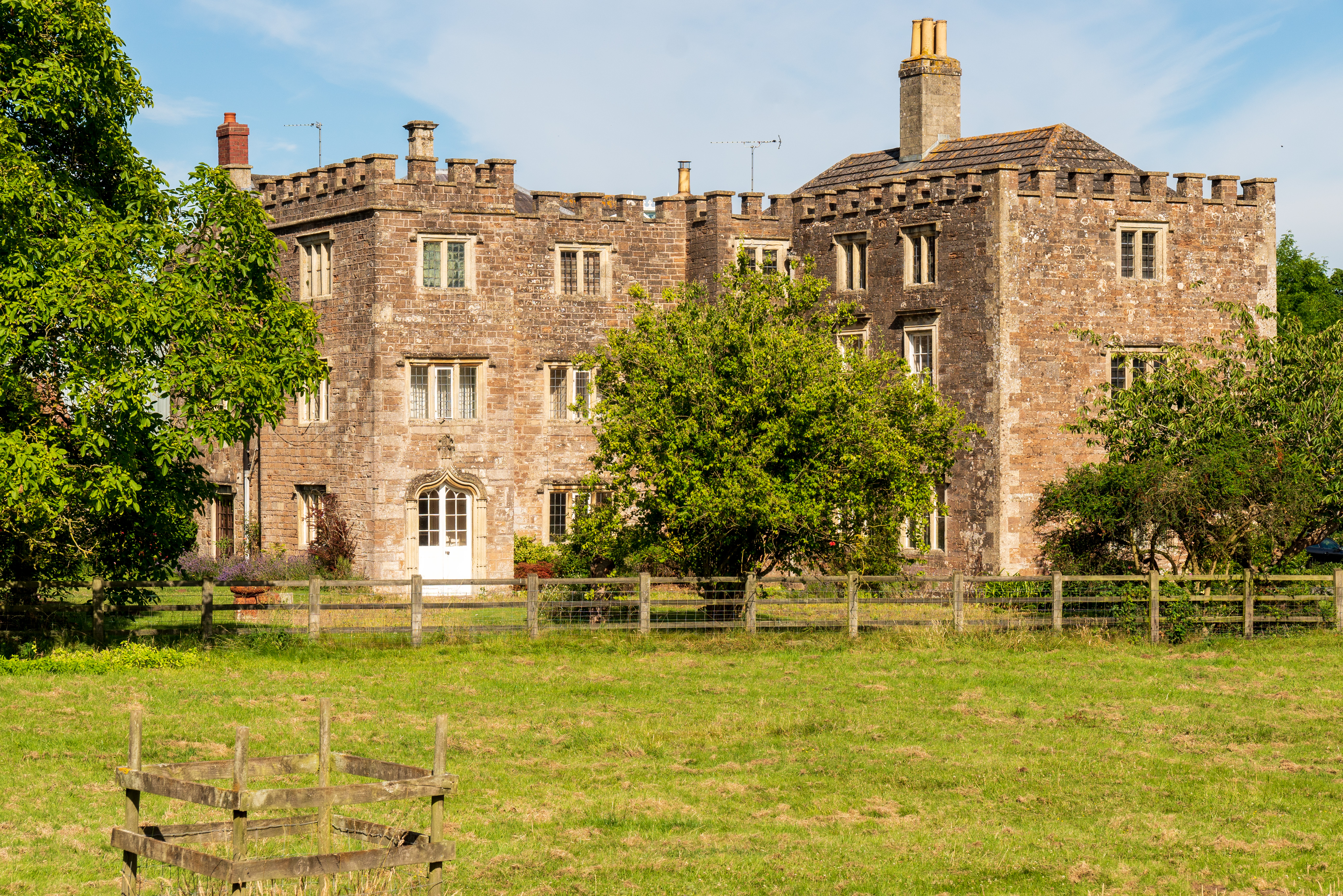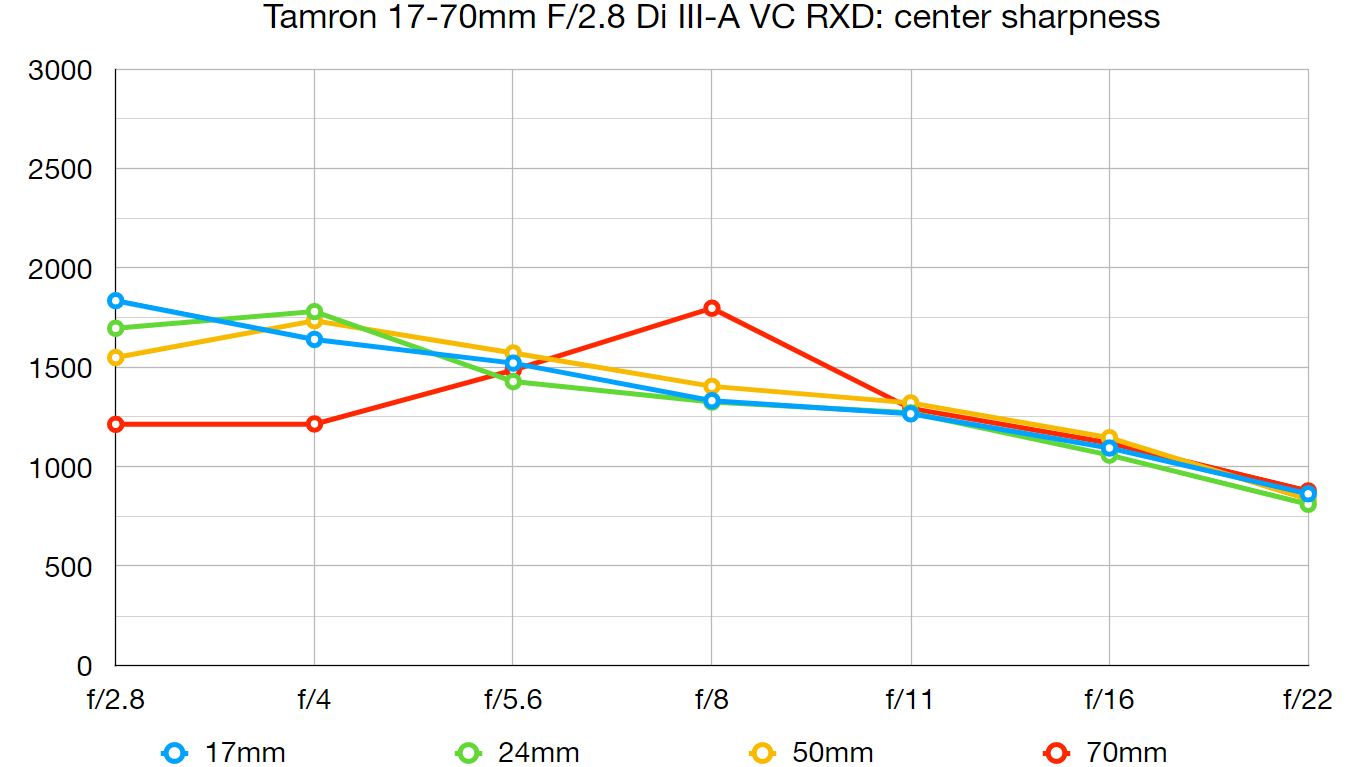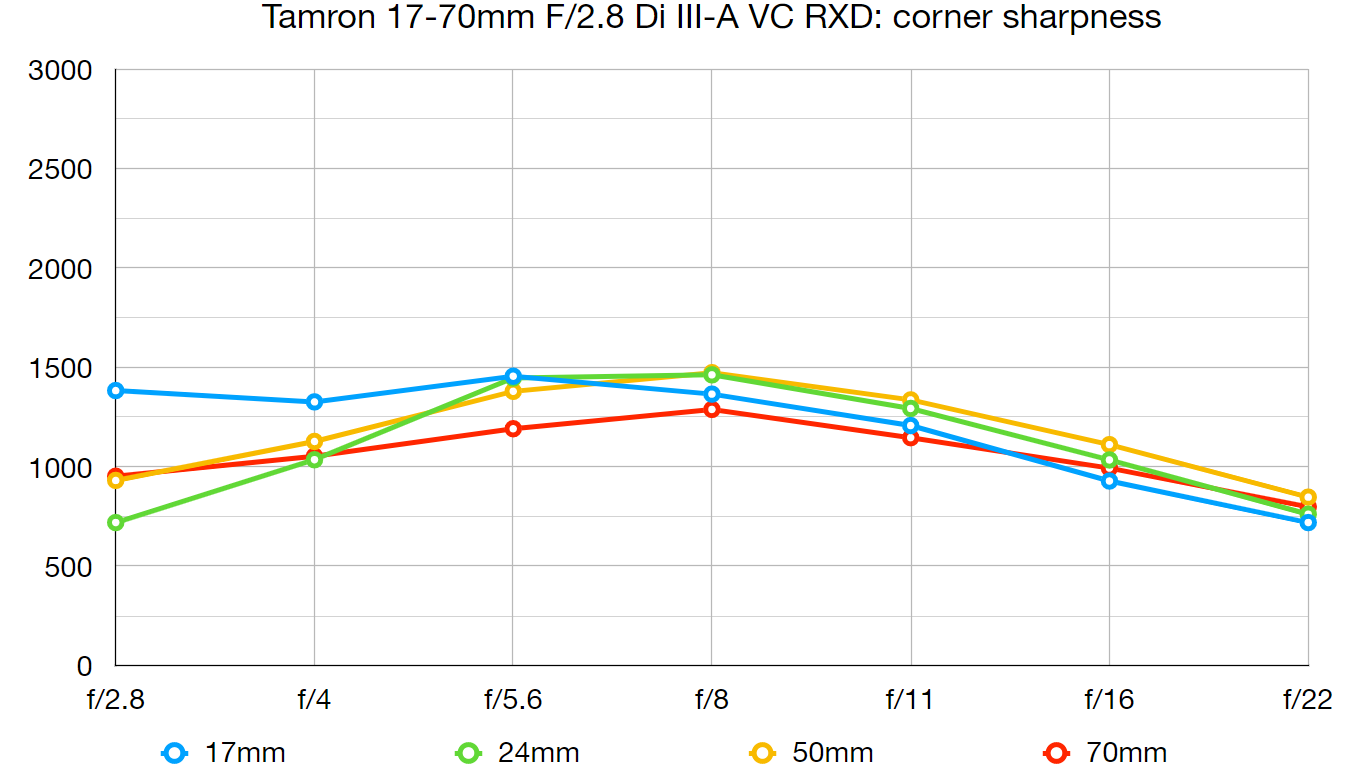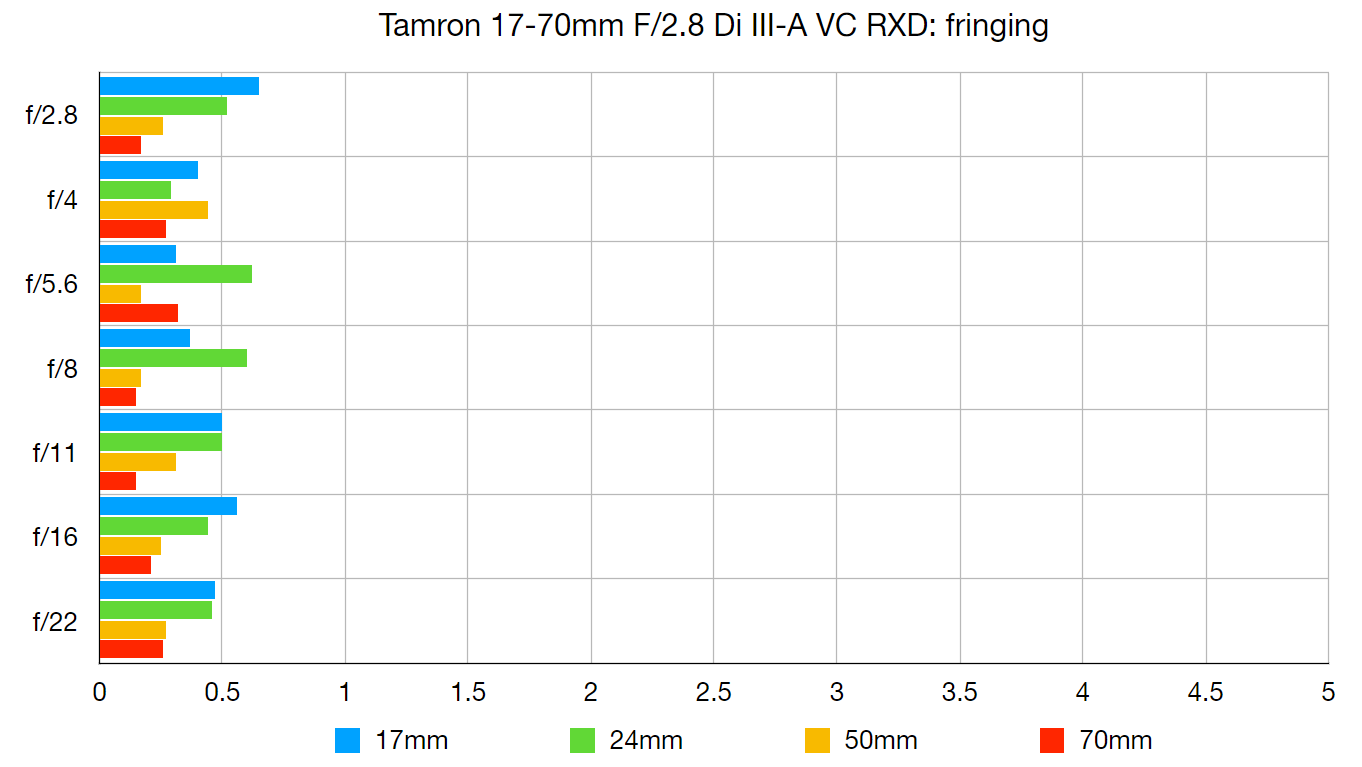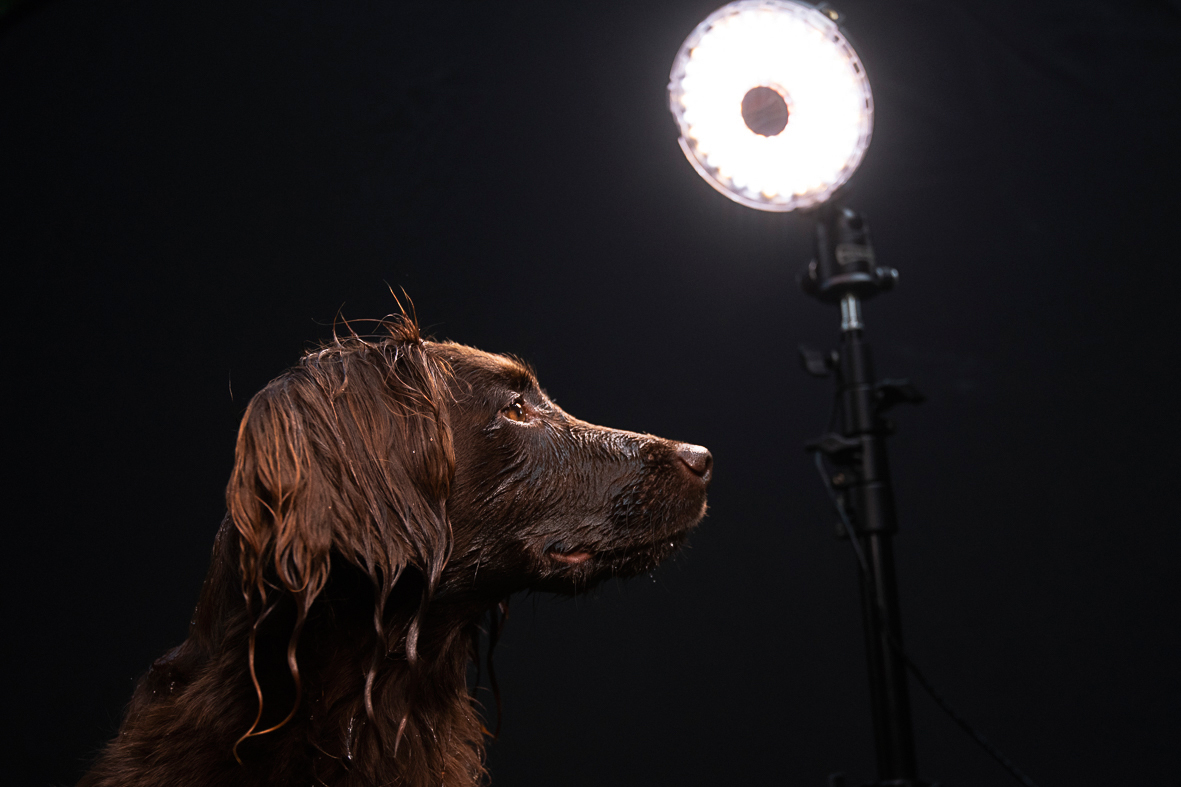Digital Camera World Verdict
The Tamron 17-70mm delivers a sizeable sweep of wide-angle to short telephoto focal lengths, all with an f/2.8 aperture. That’s quick for lens with such a large zoom range, making it an attractive proposition for APS-C format Sony E and Fujifilm X mount cameras. It also adds optical image stabilization and delivers good performance with very pleasing image quality, while featuring a tough yet lightweight and weather-resistant construction. All in all, it’s a very good buy at the price.
Pros
- +
Pleasing image quality
- +
Optical image stabilization
- +
Multiple weather-seals
Cons
- -
Feels large on small bodies
- -
Sharpness could be better at some settings
- -
Noticeable distortions when uncorrected
Why you can trust Digital Camera World
Mount the Tamron 17-70mm F/2.8 Di III-A VC RXD on an APS-C format Sony E-mount mirrorless body and has an effective zoom range of 25.5-105mm. That’s very similar to using the highly popular Sony FE 24-105mm f/4 G OSS on a full-frame camera, but with the added bonus that the Tamron’s constant aperture rating is a full f/stop faster. Naturally, you get the same effective zoom range with the Fujifilm X-mount version of the lens.
Specifications
Mount: Fujifilm X, Sony E
Full-frame: No
Autofocus: Yes
Stabilization: Yes
Lens construction: 16 elements in 12 groups
Angle of view: 80-23 degrees
Diaphragm blades: 9
Minimum aperture: f/16
Minimum focusing distance: 0.19m
Maximum magnification ratio: 0.21x
Filter size: 67mm
Dimensions: 75x119mm
Weight: 525g
Key features
The zoom range and f/2.8 constant aperture are key features of this lens. Sigma used to make something similar for Canon and Nikon APS-C format DSLRs, in the shape of the 17-70mm F2.8-4 Macro OS HSM Contemporary, as well as a non-stabilized version for Sony A and Pentax K mount cameras. Naturally the Sigma lacked a constant aperture, which shrank from f/2.8 to f/4 at the long end of the zoom range.
The Tamron looks a bit of a bare-bones affair with no buttons or switches, but there’s a lot going on inside. Autofocus is driven by an RXD (Rapid eXtra-silent stepping Drive) motor which is fast and virtually silent in operation. There’s also Tamron’s proprietary VC (Vibration Compensation) optical image stabilization, which is great to have when using the various Sony and Fujifilm APS-C format mirrorless cameras that lack in-body stabilization.
Optical finery includes two glass molded aspherical elements and two LD (Low Dispersion) elements, aiming to minimize spherical aberration and distortions, and to enhance clarity and color rendition respectively. Tamron’s BBAR (Broad-Band Anti-Reflection) coating is applied to reduce ghosting and flare.
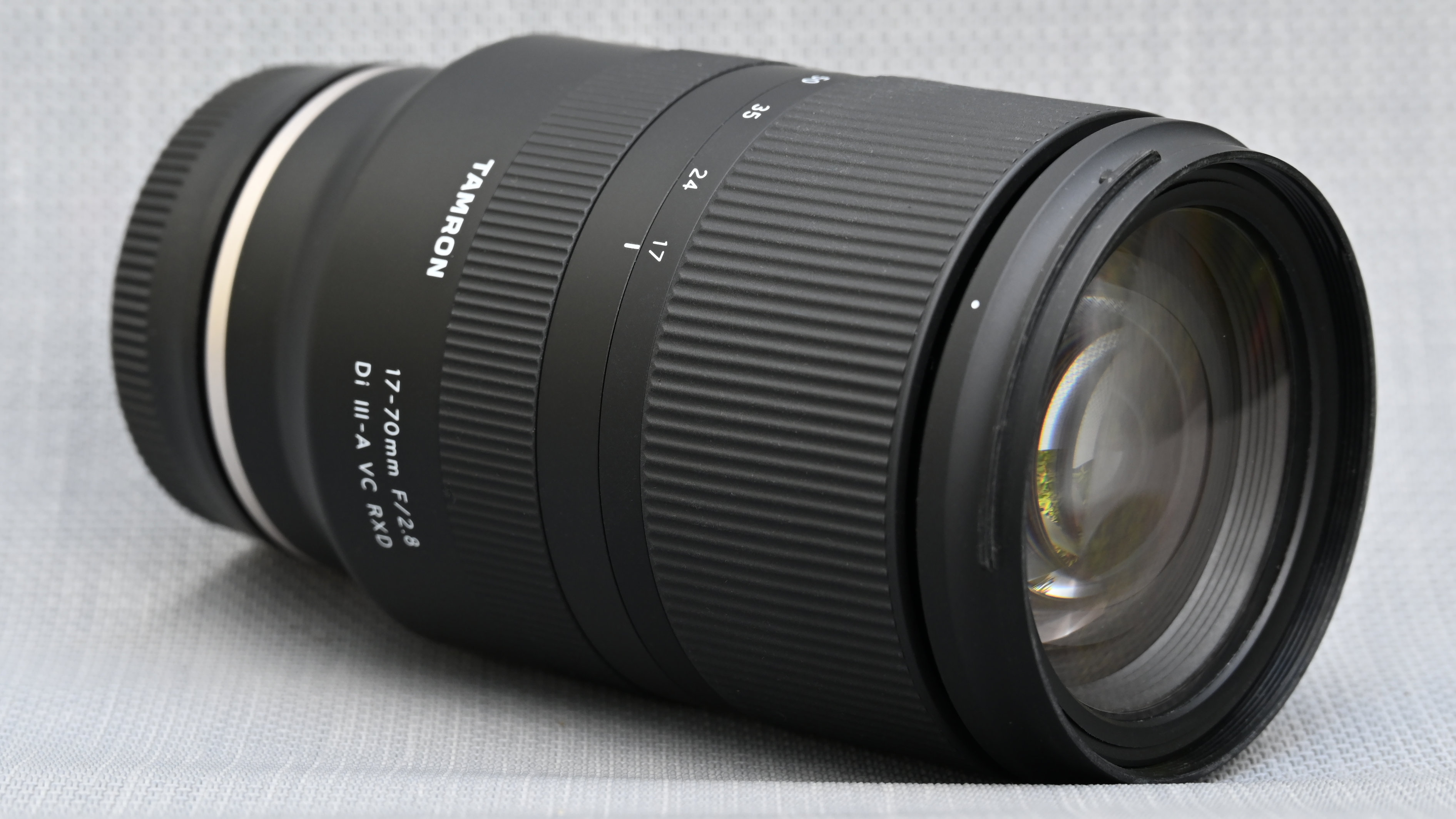
Build and handling
The lens is fairly large for an APS-C format standard zoom, at least in relation to some of the Sony and Fujifilm bodies for which it’s intended, but at least it’s quite lightweight at 525g. It physically extends at longer zoom settings, but not by much, stretching from 119mm to 147mm, and comes complete with a petal-shaped, bayonet-fit hood.
The construction feels sturdy and solid, despite being lightweight, and features multiple weather-seals. A fluorine coating is applied to the front element, to repel moisture and grease, and to make cleaning easier.
Performance
In the Sony E-mount edition that we tested, autofocus proved fast and consistently accurate, as well as being fully compatible with advanced AF modes featured in recent cameras. We found Vibration Compensation to be worth about 3-4 stops in beating camera-shake during handheld shooting.
Our lab tests produced a mixed bag of results for sharpness, the lens being sharper in the interim sector between the center and edges of the frame at various combinations of focal length and aperture. Even so, sharpness is generally very good and proved satisfying in our real-world tests.
The minimum focus distance of 19cm (7.5 inches) enables close-up shooting with a maximum magnification ratio of 0.21x. Typical of Tamron lenses, bokeh is nice and smooth, making it good for portraiture and still life photography where you can take advantage of the f/2.8 aperture at longer focal lengths. The 9-blade diaphragm gives a well-rounded aperture when stopping down a little.
Sample images
Lab results
We run a range of lab tests under controlled conditions, using the Imatest Master testing suite. Photos of test charts are taken across the range of apertures and zooms (where available), then analyzed for sharpness, distortion and chromatic aberrations.
We use Imatest SFR (spatial frequency response) charts and analysis software to plot lens resolution at the center of the image frame, corners and mid-point distances, across the range of aperture settings and, with zoom lenses, at four different focal lengths. The tests also measure distortion and color fringing (chromatic aberration).
Sharpness:
At many combinations of zoom length and aperture, the lens is unusually sharper between the middle and edge of the image frame than it is at the center. Even so, levels of sharpness are mostly very good, although it does drop off a bit at the long end of the zoom range when using the widest aperture.
Fringing:
The best camera deals, reviews, product advice, and unmissable photography news, direct to your inbox!
Color fringing is very negligible at all zoom and aperture settings, even with automatic in-camera correction switched off.
Distortion:
There’s noticeable barrel distortion at the short end of the zoom range, minor pincushion at 24mm and noticeable pincushion at longer focal lengths. Automatic in-camera correction is available and it’s generally wise to make use of it.
Verdict
The Tamron 17-70mm delivers a sizeable sweep of wide-angle to short telephoto focal lengths, all with an f/2.8 aperture. That’s quick for lens with such a large zoom range, making it an attractive proposition for APS-C format Sony E and Fujifilm X mount cameras. It also adds optical image stabilization and delivers good performance with very pleasing image quality, while featuring a tough yet lightweight and weather-resistant construction. All in all, it’s a very good buy at the price.
Read more:
• Best camera lenses to get
• Best Canon lenses
• Best Nikon lenses
• Best Sony lenses
Matthew Richards is a photographer and journalist who has spent years using and reviewing all manner of photo gear. He is Digital Camera World's principal lens reviewer – and has tested more primes and zooms than most people have had hot dinners!
His expertise with equipment doesn’t end there, though. He is also an encyclopedia when it comes to all manner of cameras, camera holsters and bags, flashguns, tripods and heads, printers, papers and inks, and just about anything imaging-related.
In an earlier life he was a broadcast engineer at the BBC, as well as a former editor of PC Guide.



